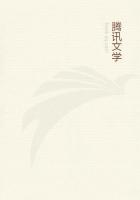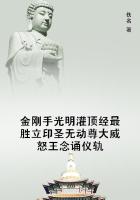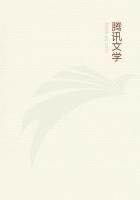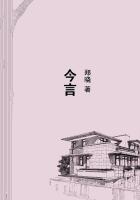[450]--I read the word in the MS.XISMAEL,and Mr.Lopes suggests that this stands for Sheik (XEQUE)Ismail.If so,undoubtedly Persia is meant.
[451]--LAUDEIS.This word,variously spelt,is constantly used.It appears to refer to the thick quilted tunics,strengthened by leather or metal pieces,which were so often worn in India in old days.They were in many cases richly ornamented,and formed a good defence against sword-cuts.The pillars of the elaborately ornamented KALYANA MANDAPA of the temple in the fort at Vellore in North Arcot,which was built during the Vijayanagar period,are carved with rearing horses,whose riders wear jerkins,apparently of leather,fastened with buttons and loops.It is possible that this was the body-clothing referred to by the chronicler.I can give no clue to the origin of the word,unless it be connected with the Kanarese LODU,"a stuffed cloth or cushion."Barros,describing the dress of the Hindu cavalry in the Raichur campaign of 1520,says that they wore LAUDEES of cotton (EMBUTIDOS,whatever that may mean in this context --lit."inlaid"),or body,head,and arms,strong enough to protect them against lance-thrusts or sword-cuts;the horses and elephants were similarly protected.Foot-soldiers carried no defensive armour "but only the LAUDEES."--Dec.III.l.iv.c.4.
[452]--LIOES.The meaning is not clear.
[453]--As to this large number see p.147ff.above.
[454]--Some details are given by Nuniz (below,p.384f.).
[455]--According to the quite independent testimony of Nuniz (below,p.374)these were the "kings"of Bankapur,Gersoppa,Bakanur Calicut,and Bhatkal.
[456]--For a full note as to these chronological details see above,p.140ff.
[457]--The "Guandaja"of Nuniz (below,p.361).
[458]--All these buildings are utterly destroyed,but there is no doubt that careful and systematic excavations would disclose the whole plan of the palace,and that in the ruins and debris would be found the remains of the beautiful sculptures described.Close behind the great decorated pavilion,from which the king and his court witnessed the feasts described by Paes,and therefore close to the gate just alluded to,are to be seen,half-buried in earth and debris,two large stone doors,each made of a single slab.The stone has been cut in panels to imitate woodwork,and teas large staples carved from the same block.
[459]--FEYTO DE HUAS MEYAS CANAS.I am doubtful as to the meaning of this.Examination of the mass of ruins now remaining would settle all these points.Stone sculptures were broken up and left.They were not removed.(See also p.288below.)[460]--Mr.Ferguson has ingeniously emendated Senhor Lopes's reading from YINAGEES POR QUE NAS QUE ESTAO METIDAS TO YMAGEES PEQUENAS QUE,&c ...The MS.,however,which is itself a copy,has POR QUE NAS.
[461]--SAO DE MEAS CANES (see above,p.285).Meaning not understood,unless it be as rendered.
[462]--This description deserves special notice.The writer is evidently describing a MANDAPA richly sculptured,of which so many examples are still to be seen in temples,and he states that the whole of the stone carving was richly coloured and gilded.This probably was always the case.Traces of colour still remain on many of these buildings at Vijayanagar.
[463]--PRANHUS (see above,p.241).Probably the sculptures were like many still to be seen in the temples of that date in Southern India,where the base of the pillar is elaborately carved with grotesque figures of elephants,horses,and monsters.
[464]--The gate still exists opposite the Anegundi ferry.
[465]--Krishnapura,where are the ruins of a fine temple.
[466]--It seems clear that this sentence must be interpolated,and perhaps also the whole of the last four paragraphs.For the penultimate sentence could not have formed part of the original chronicle of Paes,written perhaps in 1522,or thereabouts,as it refers to an event that took place in 1535--36.
[467]--Elsewhere called "Ondegema."Its other name was Nagalapur.It is the modern Hospett.(See below,Nuniz,p.387.)[468]--This "general destruction"evidently refers to the conquest of Anegundi by Muhammad Taghlaq.
[469]--(See above,p.8.)The date should be about 1330.Nuniz was here about a century wrong.
[470]--Delhi.
[471]--A common error with the foreigners.Properly speaking it was Cambaya which belonged to Gujarat.
[472]--Muhammad Taghlaq of Delhi.
[473]--Persia (above,p.10).
[474]--I.E.the Balaghat,or country above the ghats."The high land on the top is very flatte and good to build upon,called Ballagatte and Decan,and is inhabited and divided among divers kings and governors"(Linschoten,i.65).Correa divides this part of India into "Bisnega,Balagate,and Cambay."[475]--This is the Portuguese rendering of the Adil Khan,or Adil Shah of Bijapur."Idalxa"represents the latter title.
[476]--The description applies best to the Malprabha River,and perhaps "Duree"represents Dharwar.
[477]--Anegundi.
[478]--He was at that time only chief or king of Anegundi,Vijayanagar not having been yet founded.
[479]--These basket-boats are described by Paes (see above,p.259).
[480]--I have not been able to identify this name.It is possible that the first syllable represents the word SRI,and that the whole may have been a special appellation of the upper fortress or citadel,on the rocky heights above the town of Anegundi.
[481]--There had been no special war with Anegundi that we know of;but the Rajah of that place had very possibly been directly affected by,if not actually engaged in,the wars between the Hindu Hoysala Ballalas and the rulers of Warangal and Gujarat on the one hand,and the Muhammadan invaders from Delhi on the other.
[482]--See Introduction,p.13."His kingdoms"(SEUS REYNOS)refers to the territories of Muhammad Taghlaq,whose barbarities had resulted in the wasting and depopulation of large tracts.
[483]--See above,p.294,note 1.















